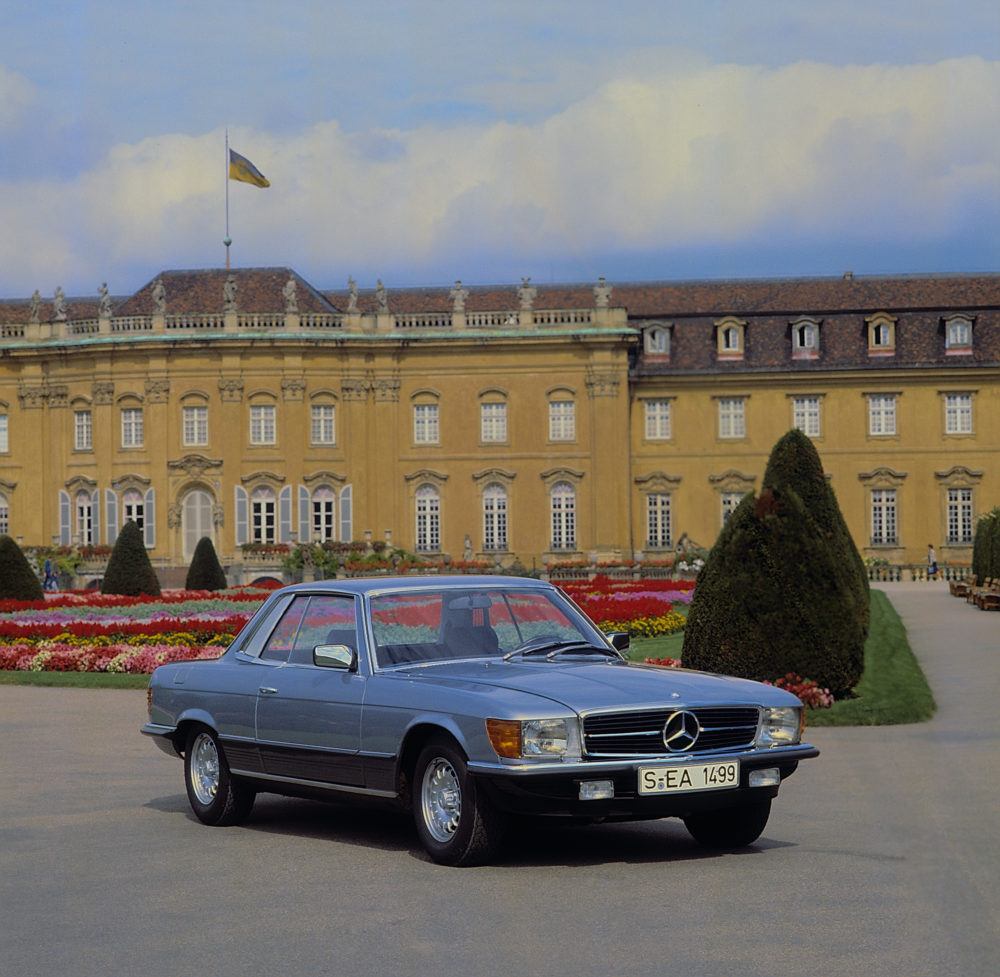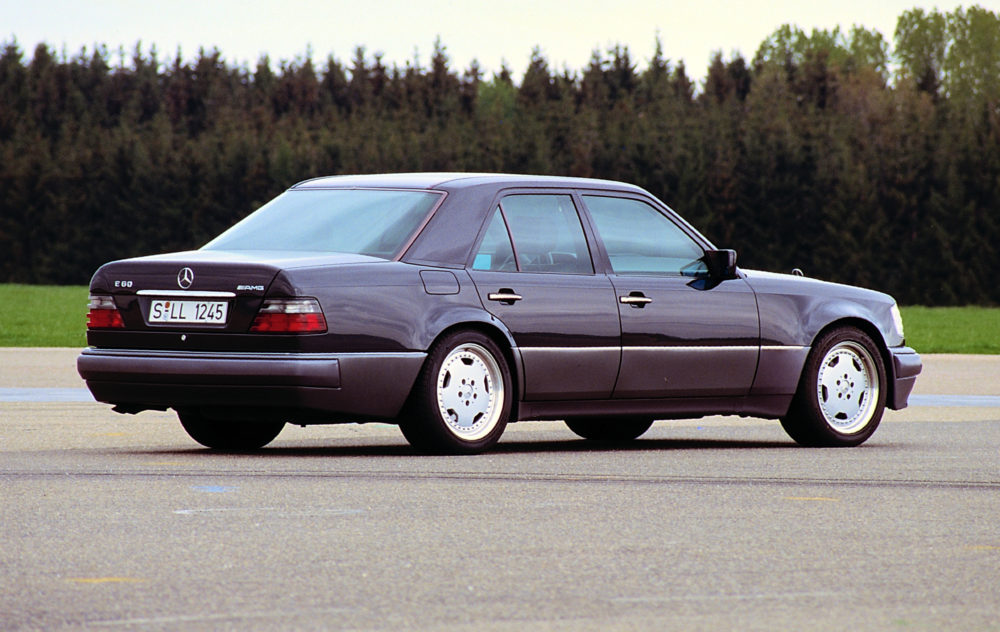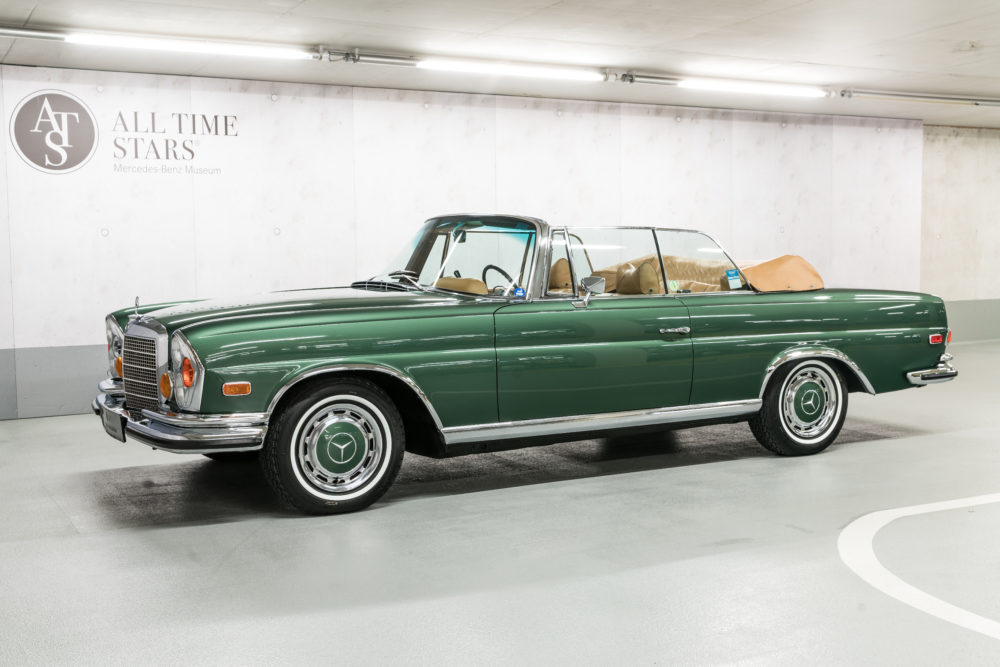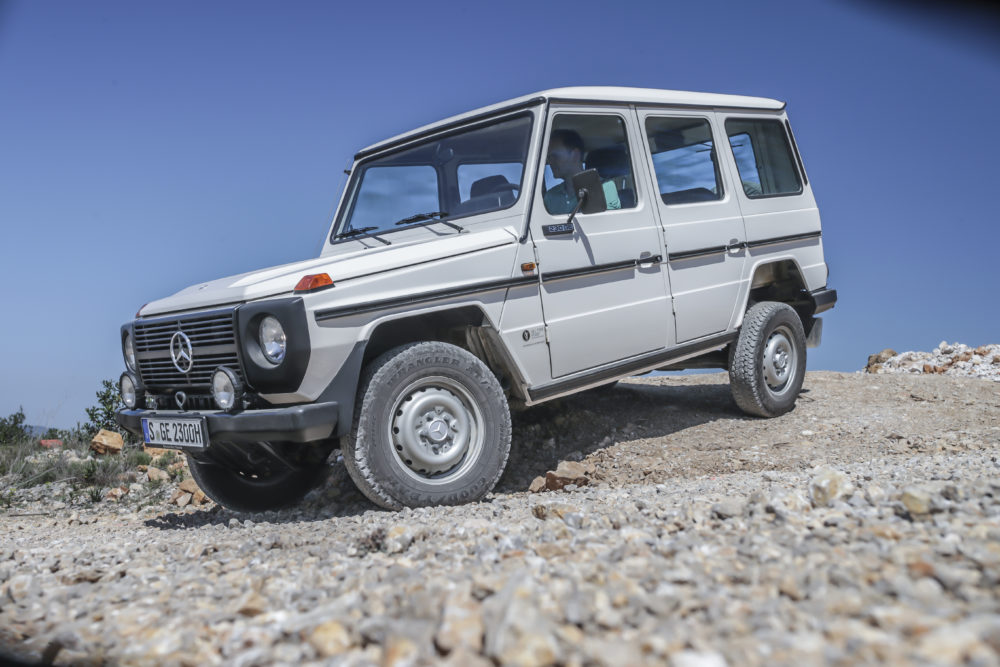Mercedes to Bring ’60 Years’ of Benzes to Swiss Rally, July 5

Mercedes-Benz 500 SLC (C 107, 1980 to 1981)
Mercedes-Benz unveiled the luxury-class coupés of the C 107 model series at the Paris Motor Show of 1971. They went into production in 1972, replacing the 280 SE and 280 SE 3.5 Coupé models. Unlike previously, instead of being derived technically from the respective luxury-class saloons, the high-end coupés were based on the SL roadsters of the 107 model series. Apart from the fixed roof of the SLC, both variants of the 107 model series were identical as far as the rear edge of the doors. Conversely, there were significant differences when it came to the rear half of the vehicle: the wheelbase was 360 millimeters longer in comparison with the SL roadster.
This gave the vehicle a considerably larger interior as well as allowing it to be designed as a fully fledged four-seater. The 350 SLC and 450 SLC were initially powered by a V8 engine. The 280 SLC with six-cylinder in-line engine was available from 1974. The top-of-the-line model of the C 107 was the 500 SLC, which went into production in 1978, initially as the 450 SLC 5.0 and, from 1980 to 1981, as the 500 SLC. In total, 2,769 units of the luxury coupé were produced.
Technical data Mercedes-Benz 500 SLC
Production period: 1978 to 1981 (including 450 SLC 5.0)
Cylinders: V8
Displacement: 4,973 cc
Output: 177 kW (240 hp)
Top speed: 225 km/h

Mercedes-Benz E 60 AMG (W 124, 1993 to 1994)
The top-of-the-line model of the Mercedes-Benz E-Class model series 124 was one of the early high-performance automobiles to be produced in direct cooperation between Mercedes-Benz and AMG. These three letters stood for the engineering office founded in 1967 by Hans Werner Aufrecht and Erhard Melcher. The initial focus was on the production of racing cars based on Mercedes-Benz standard-production vehicles. From 1990 onwards, Mercedes-Benz and AMG engaged in direct cooperation.
The first model to appear was the C 36 AMG, unveiled in 1993, as a top-of-the-range version of the C-Class. That same year, this was followed by the E 60 AMG high-performance saloon in the upper mid-class. Production of the vehicle, which had the key technical data of a super sports car, was confined to just under 150 units. The suspension and tires were adapted to the increased performance, while the four-speed automatic transmission guaranteed high ease of operation.
Technical data Mercedes-Benz E 60 AMG
Production period: 1993 to 1994
Cylinders: V8
Displacement: 5,956 cc
Output: 280 kW (381 hp)
Top speed: 250 km/h (electronically limited)

Mercedes-Benz 280 SE 3.5 Cabriolet (W 111, 1969 to 1971)
The Mercedes-Benz 280 SE 3.5 Cabriolet was the flagship model in the W 111 Cabriolet range built between 1961 and 1971. In terms of design and style, the family of luxurious open-top cars is based on the “Tail Fin” saloons of the W 111 series unveiled in August 1959. The coupé and cabriolet models featured the same safety body with crumple zones that had been introduced as a world first for the saloon models. Alongside the 220 SE and its successor, the 250 SE, the particularly exclusively equipped and powerful 300 SE (W 112) complemented the range of luxury two-door models.
Mercedes-Benz introduced the 280 SE in early 1968, followed in September 1969 by the 280 SE 3.5 Cabriolet, which was a far more powerful version with an all-new 3.5-liter V8 engine. The flagship model was exceptionally refined while also offering sports car-like performance. There were also slight stylistic modifications to the cabriolet. For example, the radiator grille was lower and wider, while the bonnet was flattened at the front. Production of the eight-cylinder cabriolet, which came with automatic transmission as a standard feature, did not exceed 1,232 units. Today, it is among the particularly sought-after classic cars of its era.
Technical data Mercedes-Benz 280 SE 3.5 Cabriolet
Production period: 1969 to 1971
Cylinders: V8
Displacement: 3,499 cc
Output: 147 kW (200 hp)
Top speed: 205 km/h

Mercedes-Benz 230 GE (model series 460, 1982 to 1991)
In February 1979, Mercedes-Benz entered completely new territory when it unveiled the G-models. Designed on the one hand as an exclusive means of transport with the emphasis on leisure, the off-road vehicle was conceived equally for tough everyday use, such as in the industrial or municipal sector. The G-series, as the model series was initially known, came in two different frame lengths and wheelbases, four engine variants and five body variants.
The 230 GE was an example of the continuous further development of the G: powered by the efficient 2.3-liter injection engine M 102, it replaced the previous 230 G with carburetor engine in April 1982. A year later, the 230 GE was fitted with power steering as a standard feature. From 1986, a controlled three-way catalytic converter became available, initially as an optional extra. To mark its tenth anniversary, the G appeared in 1989 in the guise of the 230 GE Classic special model, limited to just 300 units.
Technical data Mercedes-Benz 230 GE
Production period: 1982 to 1991
Cylinders: 4/inline
Displacement: 2,299 cc
Output: 92 kW (125 hp)
Top speed: 147 km/h
